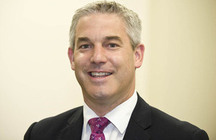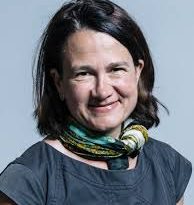Steve Barclay – 2023 Speech at the IHPN Annual Summit and Dinner
The speech made by Steve Barclay, the Secretary of State for Health and Social Care, on 31 October 2023.
Our focus at the Department of Health and Social care is to diagnose and treat conditions quicker.
Because this makes patient outcomes better, but it’s also much cheaper to deliver.
That’s the sweet spot that we’re focused on hitting.
One where patients and taxpayers are both better off.
This approach underpins everything we as a department are doing.
From our pharmacy first rollout through to the lung cancer screening programme.
And it’s why, David [David Hare, Chief Executive of the Independent Healthcare Providers Network (IHPN)], I strongly support working with the independent sector.
You collectively have a key role to play in diagnosing and treating conditions, and delivering the improved patient outcomes we all want to see.
We are speeding up the diagnosis of major diseases.
As a result of more referrals and screening, the percentage of cancer patients presenting in emergencies fell by more than 15% between 2010 and 2022.
And we must keep driving these rates down.
A University College London study found patients diagnosed in emergencies are half as likely to survive 12 months than those diagnosed through non-emergency routes, like GPs.
And this isn’t just about cancer, around 8 in 10 heart failures are diagnosed in emergency departments.
So, we need to get these numbers down to help save lives.
And to do so, we need to turbocharge testing and diagnostics.
That’s why, as an example, we’re rolling out more blood pressure checks than ever before.
But this is far from the only challenge that our health system faces.
The pandemic left behind – as colleagues in the room are well aware – very large backlogs, not least in elective care.
But while we often focus on the challenges of COVID, it also showed us opportunities, the way to do things differently.
The NHS worked effectively with the independent sector to maximise capacity and to tackle a common challenge.
Many people in this room contributed to this effort.
And the government – and people across the country – are grateful for how you cleared your schedules to provide NHS care to patients most in need.
Now, this partnership must be sustained if we are to tackle those COVID backlogs.
That’s why we launched, last year, the Elective Recovery Taskforce.
It united the public and independent sectors with a clear goal: using every bit of available capacity to cut waiting lists.
And David, I want to recognise the contribution the IHPN made to the taskforce.
And I was delighted your leadership throughout the pandemic was recognised with an MBE.
As the taskforce rightly concluded, one way of better using available capacity is delivering meaningful patient choice.
We know three-quarters of patients are willing to travel to get care quicker.
And we know improving choice can reduce waiting times by up to 3 months.
That’s why we’ve committed to giving patients a choice of 5 providers at GP referrals, including those from the independent sector.
Allowing patients to choose where they’re treated based on what matters most to them.
That may be shorter waiting time.
It may be seeing a particular doctor.
Or it may be receiving care closer to home.
[Political content removed]
So from today, patients in England who have been waiting more than 40 weeks for treatment will have the right to request to be seen elsewhere.
And that’s an opportunity opened up to around 400,000 patients who will be eligible.
Hospitals will contact them to see how far they’re willing to travel.
And if they request to move, integrated care boards must make every effort to find hospitals with shorter waiting lists.
Not just within the NHS, but also across the independent sector.
If they find shorter waiting lists, integrated care boards must give patients the choice to transfer for faster care.
And these reforms have the Prime Minister’s personal backing.
They will help more patients exercise their right to choose, and through that, help cut waiting lists.
But our elective taskforce wasn’t just about driving reform from the centre, it also focused on empowering integrated care boards themselves and independent providers to cut waiting lists at a local level.
The taskforce assessed different ways of doing so at 2 ICBs.
Both of which delivered results.
Leicester, Leicestershire and Rutland saw an increase in independent sector activity of more than 70%.
And by July, just 15 patients across Birmingham and Solihull were waiting more than 18 months for treatments.
This shows how effectively ICBs and the independent sector can work together to cut waiting lists at a local level.
And I know how critical independent oversight of choice, as it is now rolled out, is to giving confidence to investors.
That’s why, working with David and colleagues, the taskforce recommended an independently chaired panel to promote genuine choice and fair procurement.
And today, I can confirm the panel will be up and running by January.
Now, the Elective Recovery Taskforce has achieved a lot.
But perhaps its greatest success has been turbocharging the rollout of community diagnostic centres, or CDCs – the one-stop shops where patients receive tests for conditions like cancer and heart disease.
In his 2020 review, Mike Richards set out his vision for CDCs – a radical investment and reform of diagnostic services, putting care at the heart of communities.
Governments of all stripes have been criticised for prioritising investment in acutes over community services.
But we’ve made community diagnostic centres a reality.
One hundred and twenty seven CDCs are already open.
Many are on high streets, in car parks, or even outside football stadiums.
Giving patients care closer to home.
Increasing NHS capacity.
Reducing pressure on hospitals.
And getting patients lifesaving diagnostics faster.
Community diagnostic centres are the biggest investment in MRI and CT scanning capacity in the NHS’s history.
And over the course of the programme, we will have increased our stock of scanners by almost a third.
The independent sector has, of course, been key to this success.
Thirteen CDCs will be run by independent providers, 8 are already operational, and 22 CDCs on the NHS estate use the independent sector’s diagnostics capabilities.
The independent sector’s investments in CDCs has saved an estimated £110 million from the NHS capital budget.
Money we put straight back into a further 7 community diagnostic centres.
Giving patients better care, and delivering better value for money for the taxpayer.
And today, I’m delighted to announce we’ll have opened 160 community diagnostic centres by March – hitting our target a year early.
We’ve moved the opening dates for 40 CDCs, bringing them forward into this year.
Our decision to do that was criticised at the time.
But getting these CDCs open is why we’ve beaten our target.
It’s why more patients will receive potentially lifesaving checks sooner.
And I will never forget the reason that matters.
When I was with the Prime Minister, in of all places, an Asda car park in Nottingham – talking to a guy, Terrence, at a lung cancer screening truck there.
He was a heavy smoker.
And he said to me he would never have gone to hospital to be checked.
He would have been too worried to do so.
But because it was in the car park of the Asda store, he had a lung cancer screening check.
It had been positive, and diagnosed him at a much earlier stage.
He said, “I’d have never gotten checked going to hospital, but the scanner has been so easy to get it done.”
And we want more people across the country to do what Terrence did, and to get the tests they need as quickly as possible.
That’s why today, I’m pleased to announce 3 of the final locations for our community diagnostic centres.
Sites at Queen Mary’s Hospital in Sidcup, in Halifax, and in Bognor Regis, all of which will open this December – each one providing tens of thousands of vital checks every year.
Last month, NHS England also confirmed the approval of 4 more community diagnostic centres – 2 in Wiltshire run by the independent sector, one in Thanet, and one in Cheshire.
And we’re committed to transparency as well as delivery.
I think the public has a right to know when their local CDCs will open.
And more importantly, once they’ve opened, how they’re performing.
That’s why we’re introducing an online dashboard to make this information easily accessible, alongside details of new hospital builds and upgrades.
And it’s why, before the end of the year, we’re committed to publishing data on the number of MRI and CT scanners that are operational across the independent sector and the NHS.
Community diagnostic centres have shown us how the public and independent sectors can deliver together.
And across the health system, there are many more challenges we can overcome.
Take training.
To deliver the huge training expansion the NHS Long Term Workforce Plan commits to – doubling medical training places, almost doubling adult nursing places – we need the independent sector to give its strongest support.
You carry out collectively a huge volume of procedures, and this in turn creates many training opportunities.
And your role in training will continue to be an important part of our wider partnership in the years ahead.
It’s not only the Long Term Workforce Plan that’s key to building that sustainable NHS; it also important that we maximise efficiency, and invest in the latest technology.
AI – on which the Prime Minister is chairing a global summit today – is a key part of that.
By the end of this year, every stroke network in England will have AI technology that can examine brain scans an hour faster.
And this matters.
Saving an hour can cut a stroke patient’s risk of suffering long-term consequences by as much as two-thirds.
So again, this isn’t theory around AI.
This is something that will be deployed in every one of our stroke centres by December, saving an hour on diagnosis and having real-terms benefits on patients’ outcomes.
And as we announced yesterday, almost half of NHS acute trusts have won a share of £21 million that we’re investing in AI.
This will accelerate the analysis of X-rays and CT scans for suspected lung cancer patients.
And studies into these technologies have shown the very real promise they offer.
Let me give you an example.
One carried out at Calderdale and Huddersfield NHS Trust suggests AI can process scans in less than 8 seconds, reducing radiologists’ workloads by 28% and reducing waiting times for suspected lung cancer patients by more than 70%.
And as the Prime Minister announced last week, we’re investing a further £100 million to use AI to unlock treatments for diseases that are incurable today.
Be that the novel treatments for dementia, or the vaccines for cancer.
So, AI isn’t a silver bullet, but I’m determined to explore how it can get patients the care they need faster.
So, in conclusion, our priorities are very clear.
To diagnose patients faster.
To give them more choice and control.
To embrace technology and innovation.
To deliver training for the long term.
And by working in partnership, David, with your colleagues in the independent sector, we can deliver all of these things.
So, together, let’s build an NHS that puts the patient first.
Thank you very much.


